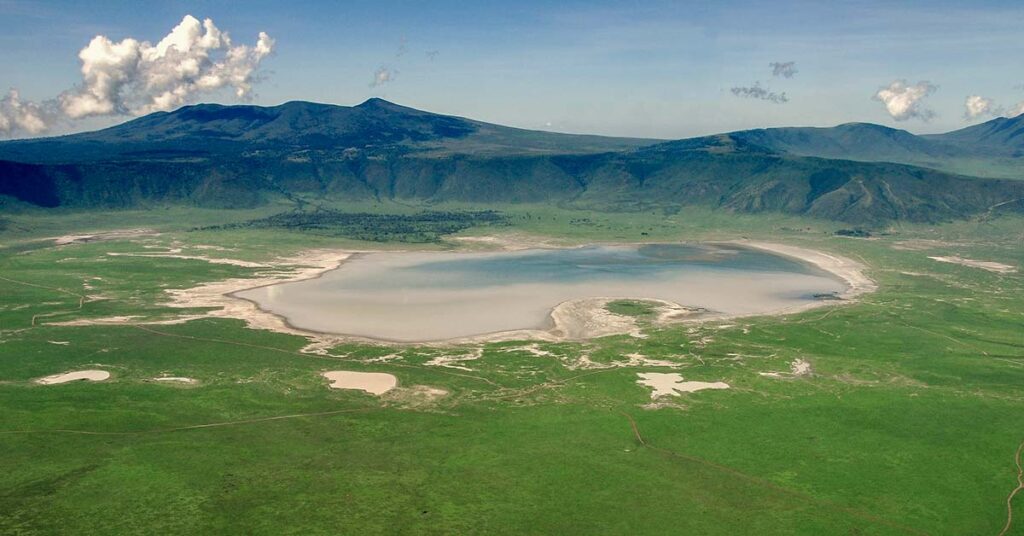At a Glance
- Tourism earnings surpass $3.4 billion as arrivals grow across parks, islands and cultural sites.
- Zanzibar leads growth with stronger flight links, beach demand and rising high-value travel.
- Safaris, adventure travel and cultural visits widen income streams for rural communities.
Tanzania’s plains, volcanic ridges and warm Indian Ocean coast are more than pretty backdrops. For decades, they’ve helped hold up one of East Africa’s most important service industries and remain central to how the country earns foreign currency.
Travel collapsed during the pandemic, but visitors have returned in steady numbers. Hoteliers, park authorities and tour operators say they’re seeing a broader mix of travelers and slightly longer stays. Officials, meanwhile, are trying to draw in higher-spending guests while tightening the rules that protect the landscapes the industry depends on.

Tourism’s expanding role
Tourism sits among Tanzania’s biggest sources of foreign exchange. Data from the Bank of Tanzania show travel earnings topping $3.4 billion in the 2024–25 period. Growth came from rising arrivals across the Serengeti, the Ngorongoro Conservation Area, Mount Kilimanjaro and the Zanzibar archipelago.

The World Travel & Tourism Council estimates the wider sector contributed Tsh8.6 trillion ($3.48 billion) to the economy in 2023, or roughly 9.5 percent of GDP. Those inflows support thousands of jobs, help stabilize the shilling and soften the blow when global commodity prices weaken.
The money doesn’t stay in one lane. It moves through domestic airlines, safari camps, transport firms, farming communities, food processors, guides, craftsmen and small traders. In many rural districts, the spending power that comes with a full tourist season is one of the few dependable income streams.

Arrivals and shifting source markets
International arrivals passed 1.8 million in 2023 and kept rising through 2024 and early 2025. While Europe remains a major source, the mix has become more diverse, with steady growth from the U.S., India, the Middle East and elsewhere in Africa.
Zanzibar has been the strongest performer. A blend of beach resorts, Stone Town’s heritage appeal and better flight connections has pushed the islands to repeated visitor highs and deepened their contribution to the broader economy.
The famous northern circuit, Serengeti, Ngorongoro, Tarangire and Manyara—still leads in revenue. Travellers spend more per trip here than on most coastal holidays, which aligns with the government’s push for higher-value tourism rather than simply more footfall.

Segments driving growth
- Safaris:
Private concessions and upscale lodges continue to attract international guests. These operations channel part of their earnings into conservation funds, raising revenue per visitor and supporting wildlife management. - Island leisure:
Zanzibar, Pemba and Mafia draw both mass-market and luxury travelers, creating demand for resorts, marine tours and new regional flights. - Climbing and adventure:
Mount Kilimanjaro remains one of the country’s biggest job creators in tourism, employing guides, porters and logistics crews. - Cultural tourism:
Interest in Maasai visits, homestays and local craft markets has grown, helping communities outside major parks benefit from visitor spending. - Marine and boutique travel:
Yachting, diving and small-boat excursions, especially around Mafia Island Marine Park, continue gaining traction.
Managing investment pressures
Interest from hotel brands, aviation firms and private investors keeps rising. But that brings friction over land use, new resort sites and wildlife corridors. Recent policy reviews call for stronger environmental assessments and clearer tax and concession terms to make sure communities and the state see fair returns.
The road ahead
Tanzania’s tourism rebound shows the staying power of its wilderness, coastal towns and cultural attractions. The challenge is ensuring growth does not erode the very resources that sustain it. If conservation financing improves, visitor spending rises and benefits reach more regions, Tanzania could secure its place among Africa’s most competitive and resilient tourism-driven economies.






